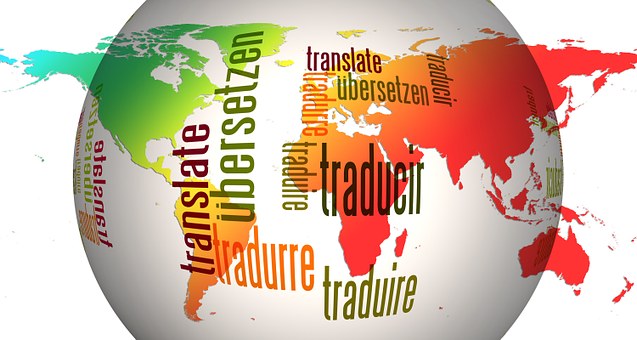By now, you’ve probably had your fill of Enterprise Connect reviews, here on No Jitter and elsewhere, and given how impressive the conference was, the extensive coverage has been warranted. EC19’s moment has largely passed now, but I’ve got a takeaway here you’re not going to see anywhere else, and it’s only loosely tied to the event.
Speech technology was one of the more interesting themes from EC19 -- and not just because I
spoke about it -- and if you’re wondering what the buzz is about, I’ve got two different examples to share that came out the research I did for my talk.
Like anything else, this topic is only interesting when thinking about it in a certain way. I opened my talk by explaining how artificial intelligence (AI) and speech are two distinct topics on very different trajectories. AI is super-hyped, all-consuming, and moving in all directions at the same time. There’s no center of gravity, and every vendor is trying to AI-infuse or AI-enable whatever it’s selling. Some of these efforts will bear fruit and some will quietly go away -- and speech is one of the applications in AI’s orbit.
Speech technology, on the other hand, is pretty mature, and to date has mostly been utilitarian, with use cases related to audio transcription and language translation. Now, picture a Venn diagram and the overlapping space between the two, and that’s where I see potential for new value. AI is a new twist on speech recognition, and for all kinds of reasons, it’s taking things to a whole new level.
Aside from making incremental but very noticeable improvements in speech accuracy, AI brings context, intent, sentiment, etc. to the equation, and that elevates the value of speech -- and voice, really -- for use cases like collaboration. This is a separate topic altogether, and for this post I just want to illustrate what’s happening with two specific examples I featured in my talk.
Otter.ai -- Seeing is Believing -- Real-time Transcription
I’ve
cited this example previously, but it also works well for this post. Otter.ai, a standalone offering from AISense, is a leading example of real-time transcription offerings that I think will soon become a standard feature for collaboration platforms. Regular transcription is after the fact, but real-time is in the moment, and is emerging as a way to make meetings more inclusive.
Aside from not having to take notes -- and thus be more engaged during a meeting -- this helps participants who are hearing-impaired or can’t follow English speech all that well keep pace with everyone else. Think about meetings with multicultural participants where English isn’t native, but also think about speakers with strong accents that even English-speaking participants have a hard time following.
I’m being cheeky, but what comes to mind here is this
scene in Austin Powers when he’s blathering on with his Dad in cockney patois. Not only is the cockney so thick that even English-speaking people need subtitles, but there’s the added layer of decoding the slang -- and that’s yet another AI problem that I’m sure the folks at Otter are hard at work on.
Speaking of decoding slang and keeping you smiling, I’d be remiss to not lay on the camp even thicker with this you-can’t-get-away-with-stuff-like-this-any-more
encounter from Airplane, a scene that no doubt inspired Mike Myers when talking naughty with Michael Caine in Austin Powers. Cut me some slack, Jack, it’s still funny.
Coming back to the collaboration environment, the combination of real-time transcription and real-time translation creates another compelling use case. Variations of this have been around a for a while, and we saw a great example of this during Microsoft’s EC19 keynote. Individually, each of these capabilities is impressive, but when you show them working in tandem -- as Microsoft did with a Chinese speaker having her speech translated to English simultaneously -- it’s pretty magical. (Watch the keynote video below, at the 15:28-minute mark).
Then there’s the AI part, and this is where a lot of new value will come from. Otter’s Teams application allows for speaker tagging, and with all the text being searchable, it’s easy to find all the spots where one person speaks, and even those where two particular people are speaking to each other, or add a search word to find out whenever that word occurs in the transcription is being discussed. The search possibilities are endless, and this makes the transcription a powerful value-add to meetings.
Other important features include customizing language references so the transcription engine will accurately track specific terms or acronyms for your industry or particular project. Otter.ai integrates with most of the major collaboration platforms, so it’s a value-add for what you’re already using. There’s also two-factor authentication to ensure security for your workspace, especially for those joining a meeting remotely where their identity is harder to ascertain.
These features are pretty cool, but none of it really matters unless the transcription accuracy is there -- not just for reading, but also for real-time when you’re actually paying the most attention. Accuracy is a point of pride for Otter.ai -- as it is for every speech-to-text player I’ve been talking to -- and if you check out the team’s background, the pedigree is certainly there.
There’s more to the story, but let’s get right to the seeing-is-believing part.
When you open this link, you’ll be able to view Otter’s real-time transcription, where you can hear the audio of me talking, along with the text of my speech appearing in real time -- with each word being highlighted in blue as its spoken and transcribed as it goes along.
Follow the bouncing ball, and as you’ll see, the speech-to-text is very accurate. The clip is about 1.5 minutes, so it’s not a long demo. For context, this is a segment during my talk at Enterprise Connect – talking about Otter -- and was recorded on a mobile phone about 20 feet away from me. All of this was done by Mari Mineta Clapp, who handles marketing on behalf of Otter, so a big thank you to Mari. These were hardly ideal recording conditions, but even with that, I think you’ll agree that the quality is good enough for enterprise collaboration purposes.
Click below to continue to next page: Google WaveNet -- Hearing Is Believing, and more









